Visiting Ravensbrück, the Nazi Concentration Camp for Women
Hey there! This post may contain affiliate links, which means I’ll receive a commission if you purchase through my link, at no extra cost to you. Please see my legal page for more details.
Visiting Ravensbrück, the Nazi death camp built for women, is hard but necessary. You must prepare yourself to walk into a world of contradiction.
For starters, the Ravensbrück Concentration Camp sits on the shore of a picturesque lake 1.5 hours north of Berlin. The beauty of the scene belies the horror that once reigned there.
Unlike other camps, Ravensbrück was not built specifically for Jewish prisoners. It was built to hold about 6,000 female prisoners deemed “undesirable” for being communists, members of the resistance, prostitutes, or simply dissidents whose views challenged those of the all-encompassing Third Reich.
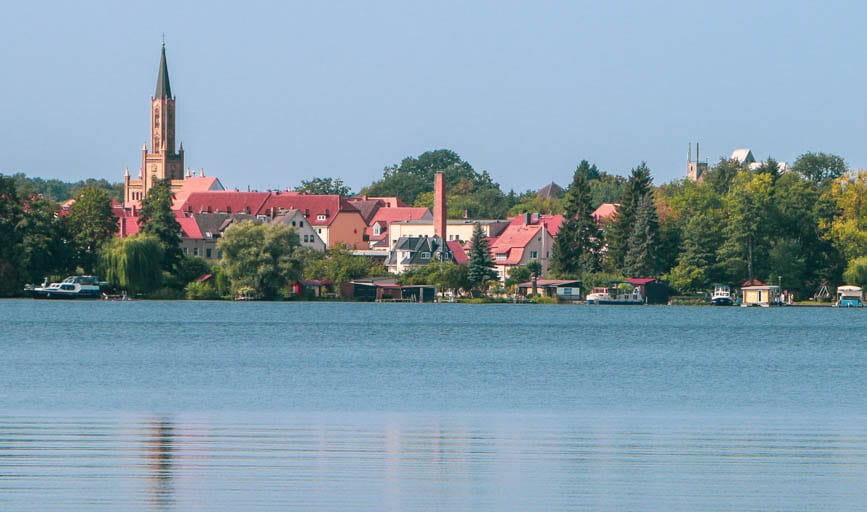
The Story of the Ravensbrück Concentration Camp
In its six years of operation, about 130,000 women from 30 different countries were marched from the train station in the resort town of Fürstenberg, through the quiet woods, beside the quaint cottages where the female guards lived with views of Lake Schwedt, and into to the hell of Ravensbrück.
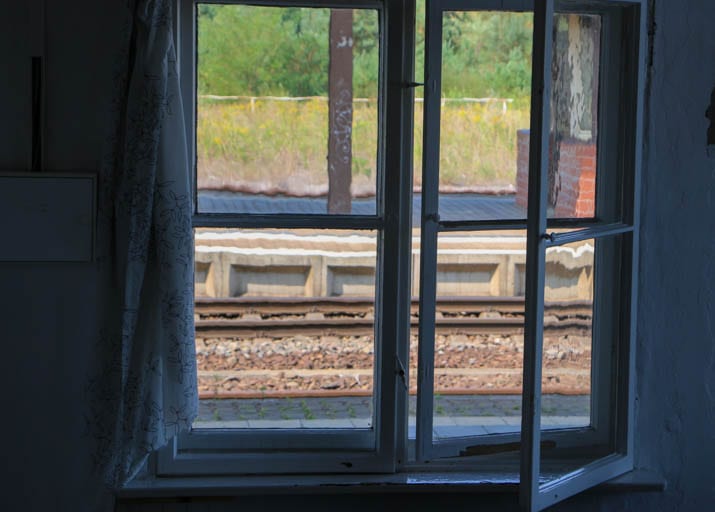
Between 30,000 and 90,000 of those women would never leave the camp – their ashes were dumped into the lake along with the records of the camp, which were burned before the Soviets liberated what was left of Ravensbrück on April 29, 1945.
I visited Ravensbrück twice to research a book I’m writing. Each time I learned about new stories of horror – and inspiring stories of resilience – that took place inside.
Here are a few stories that struck me.
Dichotomous Beauty Existed Here
When visiting Ravensbrück, I am struck by the beauty of the surroundings. Walking from the train station – the same one used by the Nazis to transport prisoners – and tracing the footsteps of so many forced marches through the town, I imagine that the wooded paths, the quiet cottages, and the boats on the lake, must have given those terrified women some hope.

The prisoners had no idea where they were going or the horrors in store as they walked through a town most had seen only in postcards. What did they think when they were met by a team of female guards standing beside a sparkling lake?
Any hope they may have fostered was quickly disintegrated with the crack of whips and the snarl of guards trained to kill. This was the traditional greeting for all women entering the Ravensbrück Concentration Camp.
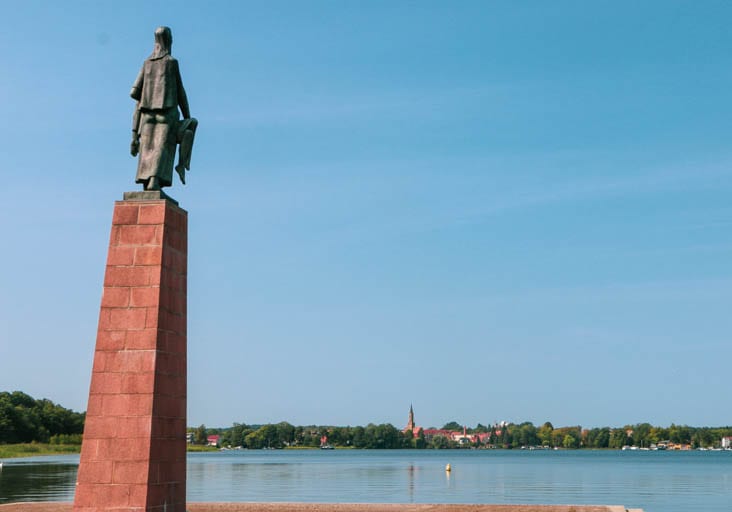
As the unimaginable reality set in, though, it must have been maddening to see the steeple of the town church across the lake. It is just visible from the notorious square where the prisoners stood for torturous and deadly hours during every type of weather for seemingly unending roll call sessions.
Overcrowding Created Both Chaos and Opportunity at Ravensbrück
The Ravensbrück Concentration Camp was built for 6,000 prisoners but may have held as many as 45,000 women at one time. That kind of overcrowding led to horrific sanitary conditions. At one point a large tent was erected to hold newly arrived prisoners because the barracks were too crowded even by the barbarous standards of concentration camp guards.
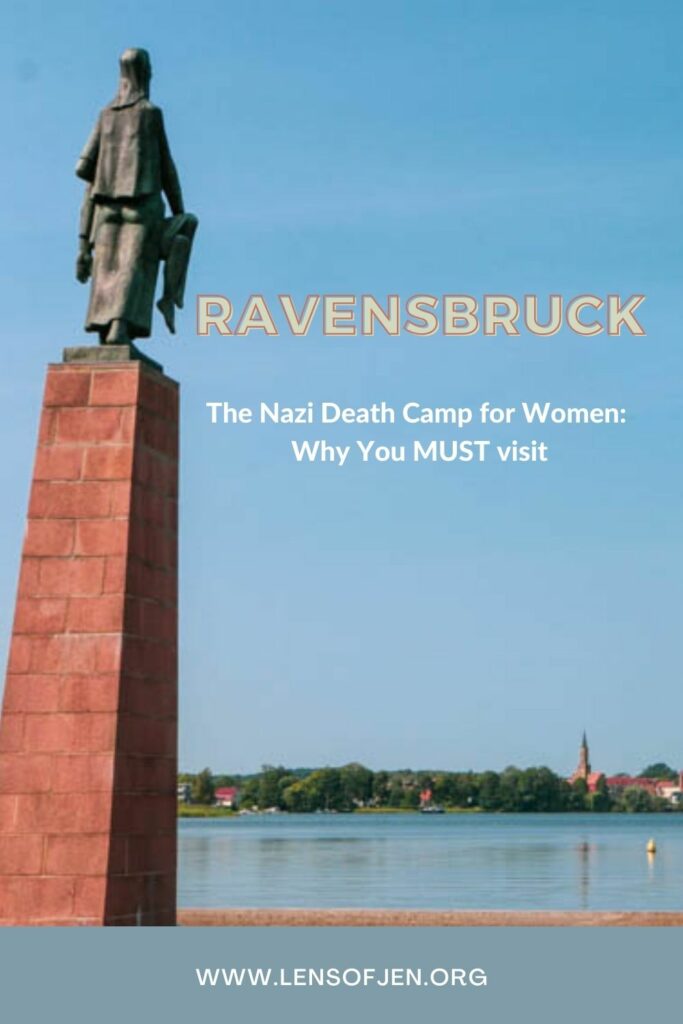
The overcrowding led to deadly conditions and disease, but the resulting chaos also led to astounding stories that are simply unheard of in other concentration camps.
Like the story of the children’s Christmas party of 1944 in which prisoners hosted an actual party and play for the kids of the Ravensbrück Concentration Camp by the prisoners.
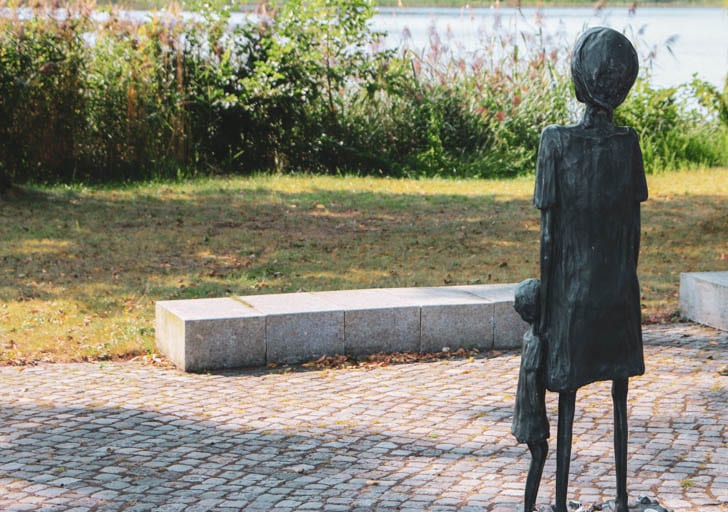
The fact that there were children at the camp is another oddity of Ravensbrück.
There was even a baby boom during the height of the overcrowded chaos when pregnant prisoners were actually allowed to give birth. The mortality rate of the children is devastating but some children did survive.
The Ravensbrück Rabbits
It was here at the Ravensbrück Concentration Camp where the infamous medical experiments on Polish women were conducted. Nazi doctors removed bone and muscle from the legs of the women and inserted debris into the wounds to learn how best to treat German soldiers suffering from shrapnel wounds.
The women earned the nickname Rabbits because of the way they hopped or hobbled around camp. In an example of light emerging from darkness, the prisoners were fiercely protective of the rabbits and risked their own lives to save as many of the Rabbits as possible.
The Female Guards of Ravensbrück
While rare, female guards did exist in the system of Nazi death camps. But they were rarely in charge. Again, the Ravensbrück Concentration Camp stands apart from the other camps in that, for a time, a woman named Johanna Langefeld supervised Ravensbrück.
History still can’t define her. Though she was in charge of selections at Auschwitz and oversaw beatings at Ravensbrück, she also fought against the implementation of beatings and took on the patriarchal system, insisting that a female should be in charge of camps for women.
In the end, the Nazis deemed her too sympathetic to the prisoners, especially the Polish prisoners, and she was removed from her post.
After her arrest by the Allies, former prisoners wrote letters in her defense. While it is unclear whether the letters were the reason, Langefeld was released from the post-war prisons.
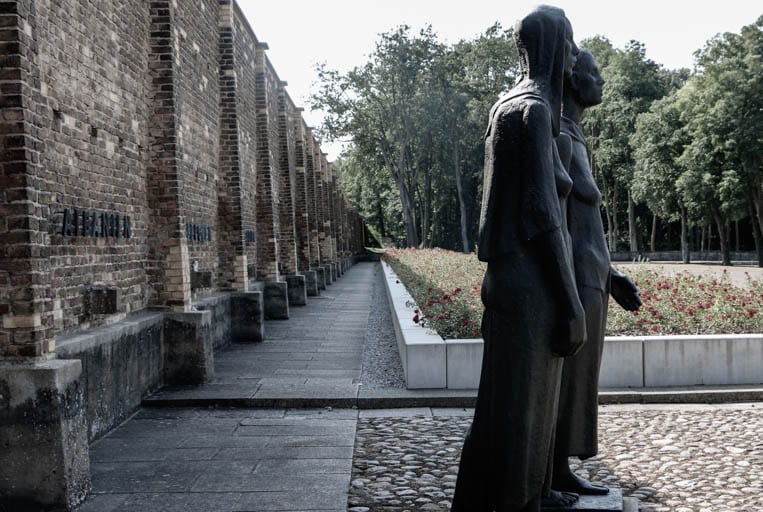
History is more definitive on some of the other guards. The cruelty of the guard Dorothea Binz is unquestioned. Binz was a local girl, growing up in a village nearby. Much like the surroundings of the Ravensbrück death camp, her beauty belied her brutishness. She was executed at the age of 22 for war crimes.
Himmler Had a Habit of Visiting Ravensbrück
Reichsfuhror Heinrich Himmler liked to visit Ravensbrück, likely because the camp was five miles from where he kept his mistress. There is a fascinating story about how he would sometimes release prisoners when he visited.
There was Forced Prostitution at Ravensbrück
It is from Ravensbrück where the Nazis selected women to be prostitutes at the brothels of other concentration camps in the system.
Imagine that hypocrisy for a moment. Many of the women imprisoned at Ravensbrück were there for practicing prostitution, and then, upon arrival at the camp, they were forced into prostitution.
Siemens Operated a Factory at Ravensbrück
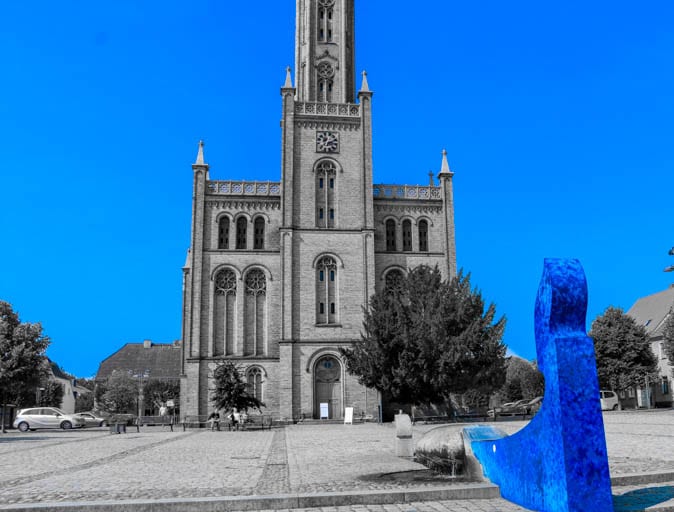
Siemens had a factory just beyond the camp walls. Like at the brothels, the physical conditions of the factory were often better than some of the arduous outdoor work units, but the conditions were still horrendous and indefensible.
The daily walk between the factory and the camp alone was deadly for the weakened women, especially in the cold months.
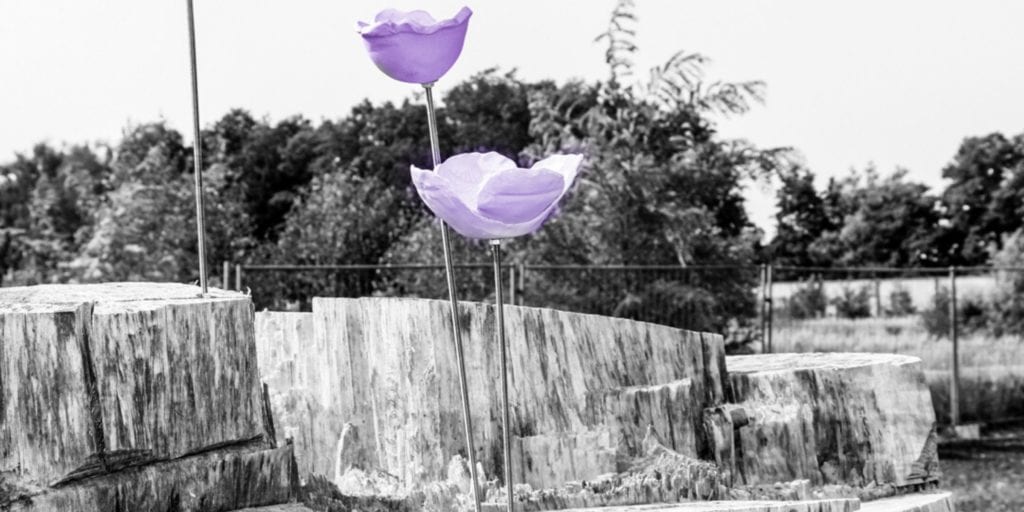
Siemens has acknowledged wrongdoing, and the company works with the Ravensbrück memorial site to frankly and factually address their participation in the Holocaust. When visiting Ravensbrück, you get a frank account of Siemens’ willing participation in the death camps of WWII.
Ravensbrück is part of my Never Forget Series of the places we should all visit in order to remember what happened during WWII and the Holocaust. Something that we should never forget is the willing collaboration of businesses in the Nazi death camps.
The Power of Female Friendship at Ravensbrück
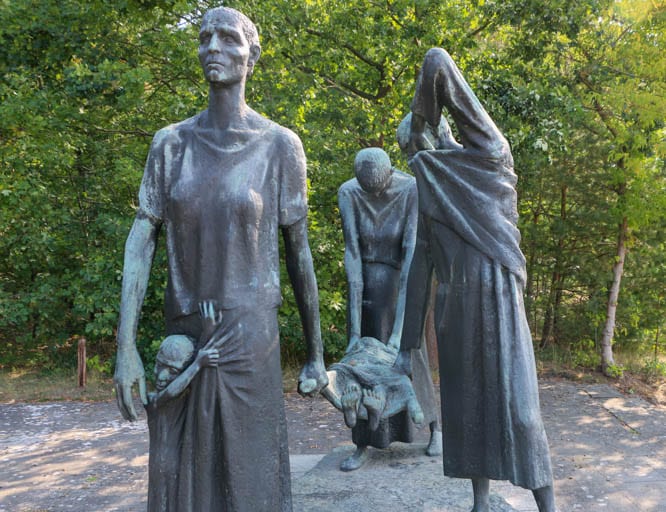
What brought me to the Ravensbrück Concentration the first time was the overarching story of female friendship – and its power.
There is a story of a train that left France in 1943 containing 230 French women deported for their part in the resistance. They were sent to Auschwitz and then to Ravensbrück. Of the 230 women, only 49 survived the camps.
That horrifying rate of survival is actually high for concentration camp odds. Carolyn Moorehead, who wrote “A Train in Winter” about the women of that fateful train, suggests that it is the bonding of the women and the strength of their friendships that helped them to endure and, in 49 cases, to survive.
Logistics for visiting Ravensbrück
Where is the Ravensbrück Concentration Camp located?
Located in the small town of Fürstenberg/Havel in northern Germany, the camp is just an hour north of Berlin by train or car.
How do you get to Ravensbrück?
The easiest way to get to Fürstenberg is by train. RE5 trains leave every hour from Berlin Hauptbahnhof to the Fürstenberg/Havel station. The camp is a 30-minute walk from the train station. It is an interesting walk through the quaint town and it’s the very walk that the prisoners took to get to the camp.
The memorial grounds are open from 9 to 5 and later in the summer months. The site is closed on Mondays.
What is the cost of visiting Ravensbrück?
Touring the museum and memorial is free. Audio guides are three euros and a necessary part of any visit that does not include a guided tour. Guided tours can be arranged in advance for an extra cost, though the tours are aimed primarily at groups (and I had some difficulty getting a response regarding an individual tour).
I have visited Ravensbrück twice and, on my first visit, I scheduled an individual tour through Gablinger Tours when I was unable to schedule a tour through the visitor center. It was expensive (200 euros) and, though the guide was very nice, I got more out of my later visit when I simply used the audio guide and wandered around in reflection.
I have twice tried to visit the archives and found them closed. I advise scheduling months in advance if that’s your interest.
Where to stay when visiting Ravensbrück
Furstenberg/Havel is somewhat limited on accommodations, so book early. Check out the map below or look for rented apartments through VRBO here.
The former female guards’ houses are actually set up as a Youth Hostel, which is interesting. I opted to stay in a rented room in the group home at the train station – the very same station where the prisoners arrived.
It was an interesting place to stay with the train buzzing past the window and a patio space literally on the platform. On a previous visit, I stayed in a private and cozy unit above the café in town.

Most people stay in Berlin and take the train for a day trip to the memorial. If you do this, make sure to take an early train because it takes a long time to absorb everything on the sprawling grounds.
What can you expect when visiting Ravensbrück?
The site is mostly outdoors, so dress for the weather. It’s an intense day, so prepare for that, too.
Fuel up at a coffee shop in town before making the walk to the memorial site.
If you’re on foot, the walk back to town and the train station is absolutely beautiful during daylight hours but wooded and a little dark during evening hours. Bring a flashlight or leave before nightfall.
Why should you visit the Ravensbrück Concentration Camp?
It’s not easy to visit sites like Ravensbrück. But it’s necessary. Even if you’ve seen other camps you should visit this camp built for women and, in large part, run by female guards.
It’s a dark place to visit but there is light. There are stories of female friendship that bonded women together in love, death, and survival.
Things to do after visiting Ravensbrück
THINGS TO DO IN FÜRSTENBERG/HAVEL and
Surrounding Area:
- Check out the boat tours or rail tours in Furstenberg/Havel in the warmer months.
- If you’re in Berlin, the Topography of Terror is a powerful WWII site
- If you’re doing a day trip from Berlin, get inspired by my friend Carina at Bucketlist2life.com, who asked German bloggers to share their favorite spots in Germany.
More reading on Ravensbrück
If you are interested in reading more about the Ravensbrück Concentration Camp, the female guards, the rabbits, and more check out Sarah Helm’s book Ravensbruck: Life and Death in Hitler’s Concentration Camp for Women.
To purchase Helm’s book (or any from my collection of the best WWII non-fiction books) from an independent bookseller near you, check out my curated list here.
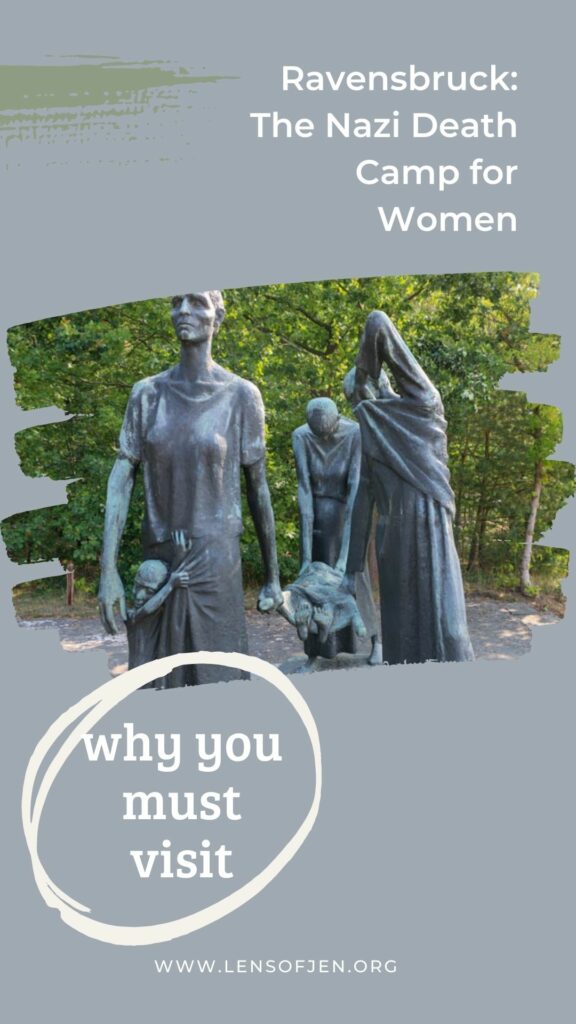
About the Author
Hi! I’m Jen!
I’m a freelance writer and travel blogger who quit my nine-to-five after my fiancé, Jeff, died of cancer at the age of 40. When he died, I realized that life is just too short to delay our dreams. Since my dream was to travel and write, I now travel and write full-time. Today I wear hiking boots instead of heels and collect experiences instead of things.

Thank you for sharing this historical (and very sad) experience with us.
The experience those women lived there is just horrible, there is no word for it and it is important that our generation keeps what’s happened then to not do the same mistakes again.
Thank you for reading. I know it’s not the lightest read, but you are so right that we need to keep talking about it.
What can I say? The experiences of these women and all other camps during this period are horrific. Indescribable. I agree that in this lifetime, we should at least set foot in any of these camps. But as for me, I am not sure I have the courage. Just imagining myself to be on the same ground with these helpless individuals, I am already feeling the goosebumps. Thanks for sharing this, in fact, this is the first time I’ve heard of this women’s prison camp.
I am sure you do have the courage, but I can completely understand your hesitancy. It’s HARD to visit places like these! But it’s important to do so when we can. It’s also good to read about it and learn, so thank you so much for doing that.
There are so many disturbing incidents within the concentration camp. Ashes dumped in the lake, 130,000 women, what the doctors did to the rabbits, to name a few. This is eerie but we can’t forget. I can’t imagine staying in the train station and touching history that close.
I remember standing alone inside the Nuremberg stadium where Hitler held youth rallies of 50,000 people. I read a lot of WW2 history as a teenager and specifically remember the photos of how this played out. I saw firsthand where he stood and I could envision a rally happening, with all the details, as I stood there. I had chills and I have never felt this way again. I felt like I touched history instead of reading about it or seeing photos.
That was in 2005 and I haven’t felt this disturbed since then. We have to remember the victims so this doesn’t happen again.
I know exactly what you mean about standing in the place of a Hitler rally. I stood in Vienna at Heldenplatz where 200,000 people stood to hear him speak when Germany annexed Vienna. My guide told that the silent majority stayed at home. It’s for that reason that I started my “never forget” series. We can’t be silent. Thank you for reading!
If you haven’t had the chance yet, read The Nine by Gwen Strauss. A difficult read at times but so very thought provoking. To hear an account from the perspective of French and Dutch members of resistance who were also strong, so very strong women is uplifting to say the very least. To endure such treatment (and rise above it) gives hope to all who are oppressed.
It’s going on my reading list. Thank you!
Haven’t heard of Ravensbruck before. Thanks for sharing this piece of history with us.
It must of been horrible back it is crazy to think what it must of been like horrifying.
It is an eerie place for sure. But the stories of love and friendship in the camp are also so beautiful.
Great article, history ones are my favorites. Super complete guide and is very important that these kind of places are not forgotte.
Great work, thanks for sharing!
Thank you for reading!
Wow, this is such a fascinating post. I think the part that really struck me was the prisoners actually writing in defence of the guard despite how they had been treated?! That says something, even if it doesn’t quite add up to me. I’d be really interested to read more about her. Also Himmler releasing prisoners? I wonder what that was about. It’s so sad reading about things like this but I think it’s really important – I’ve never even heard of this camp. It’s awful how much history is missed, how many people are forgotten. Thank you for sharing!
Thank you for reading! Ravensbruck was so unique in that there were so many female guards. There were some that the prisoners were united in disposing, but they definitely have a complicated reaction to Johanna Langefeld. Certainly, not all of the former prisoners defended her. But it’s shocking that any did at all. I learned a lot about her in Sarah Helm’s book about Ravensbruck, but I still can’t figure her out!
I very much enjoyed reading Ravensbruck. It left an indelible impression. I continued with The Nine. Hoping to travel to Ravensbruck when times are better.
That’s a hard read. Thank you for reading anyway, and I really hope you go. It’s so necessary. Travel safe, Shannon. Sending love.
Thank you for sharing this moving piece about Ravensbrück. My husband’s grandfather was a concentration camp survivor (Ebensee, Austria) and I’m currently researching and writing a novel based on his family’s experience. So important that we never forget.
Wow. I cannot wait to read your novel. And thank you for writing it. I know it’s not easy to dig into that experience
What a truly moving place this must be to visit. Those memorial statues are haunting, I can’t even imagine what it must have been like to visit this place, then or now
Thank you so much for sharing this post! It’s so close to my hometown Berlin and yet I had never heard of it…
Thank YOU for the opportunity to share it (and update it!)
This is another excellent article, Jen. You have captured the experience and history with your usual brilliance. A book that your readers might want to read is In Full Flight by John Heminway. Part of the story takes place at Ravensbruck and amplifies the history you have written.
I’ll be writing a book review about Full Flight soon and linking it to this very article. Great minds…